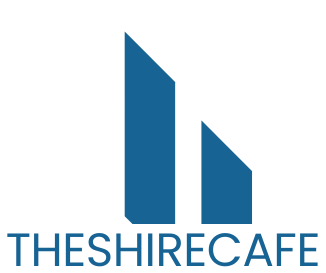Navigating the world of home financing can feel overwhelming, especially for first-time buyers. The Federal Housing Administration (FHA) loan program stands out as a popular choice for many due to its flexible qualification requirements and lower down payment options. Understanding the ins and outs of FHA loans is crucial for anyone looking to make the most informed decision on their home purchase.
This FHA loan guidebook serves as a comprehensive resource, breaking down essential information about eligibility, application processes, and potential benefits. Whether someone is aiming to buy their first home or refinance an existing mortgage, this guide equips readers with the knowledge they need to navigate the FHA loan landscape confidently. With the right insights, homeownership can transform from a distant dream into a tangible reality.
Table of Contents
ToggleOverview Of FHA Loans
FHA loans offer accessible home financing options for first-time and repeat buyers. These government-backed loans provide several advantages, primarily lower down payment requirements, which can be as low as 3.5%. They also accommodate individuals with lower credit scores, making homeownership more attainable.
FHA loans require mortgage insurance premiums (MIP), which protect lenders in case of default. Despite this cost, the overall affordability and leniency of lending criteria make FHA loans attractive. Borrowers can finance up to 96.5% of the home’s value, positioning these loans as viable alternatives in the housing market.
The application process for FHA loans involves specific documentation, including proof of income, credit history, and employment verification. Lenders assess debt-to-income ratios to ensure borrowers can manage monthly payments effectively. Properties must meet FHA safety standards, ensuring homes are safe and habitable.
FHA loans apply to various property types, such as single-family homes, multifamily properties, and certain condos. Additionally, borrowers can refinance existing FHA or conventional loans through streamlined processes, often leading to better rates or lower monthly payments.
Understanding FHA loans equips prospective homebuyers with knowledge to navigate the home financing landscape effectively. This guidebook aims to clarify the ins and outs of FHA loans, paving the way for informed and confident decisions in purchasing or refinancing homes.
Key Features Of The FHA Loan Guidebook

The FHA Loan Guidebook outlines essential features and requirements for potential homebuyers. It serves as a valuable resource for understanding loan eligibility and benefits.
Loan Eligibility Requirements
Loan eligibility for FHA loans includes specific criteria that applicants must meet. Homebuyers must have a credit score of at least 580 to qualify for a 3.5% down payment; those with scores between 500 and 579 may still qualify but need a 10% down payment. Documentation required includes proof of income, tax returns, and a history of employment. Additionally, the property must serve as the primary residence. Debt-to-income (DTI) ratios should not exceed 43%, ensuring borrowers can manage monthly payments alongside other financial obligations. Furthermore, while first-time homebuyers frequently utilize FHA loans, repeat buyers also benefit from the program.
Benefits Of FHA Loans
FHA loans provide numerous advantages that enhance accessibility for homebuyers. Low down payment options, starting at 3.5%, make homeownership attainable for many, especially first-time buyers. Flexible credit score requirements allow individuals with lower scores to enter the housing market. FHA loans also feature competitive interest rates, which can lead to significant savings over the loan’s life. Mortgage insurance premiums (MIP) can be financed within the loan amount, reducing upfront costs. Additionally, FHA loans permit up to 96.5% financing of a home’s value, making it possible for homeowners to buy properties without substantial cash reserves. Overall, FHA loans deliver a range of benefits, promoting homeownership among diverse populations.
Understanding The FHA Loan Process
The FHA loan process involves specific steps and requirements that ensure a smooth application and approval experience. Understanding these elements helps prospective borrowers prepare effectively.
Application Steps
- Pre-Approval: Obtain a pre-approval to assess eligibility and determine budget. Lenders evaluate credit history, income, and debt-to-income ratios during this stage.
- Choose a Lender: Research and select a lender experienced in FHA loans. Compare interest rates, fees, and customer service options.
- Complete Application: Fill out the loan application with personal and financial information. Provide details on employment, income, and existing debts.
- Property Selection: Identify a property that meets FHA guidelines. Ensure the property serves as a primary residence and adheres to safety standards.
- Home Inspection: Arrange for an inspection to confirm the property’s condition complies with FHA requirements. This step safeguards against unforeseen repairs.
- Loan Underwriting: The lender examines the application and documentation, assessing risk and ensuring compliance with FHA guidelines before approving the loan.
- Closing: Once approved, review and sign documents at closing. Pay any required closing costs or down payment, and finalize the loan agreement to obtain ownership.
Required Documentation
- Proof of Income: Provide recent pay stubs, W-2 forms, or tax returns to demonstrate income stability.
- Employment Verification: Submit documentation confirming current employment status and history, typically through a verification letter from the employer.
- Credit Report: Allow lenders to access credit reports to evaluate creditworthiness. This assessment influences the loan’s interest rate and terms.
- Bank Statements: Present recent bank statements to showcase savings and confirm the availability of funds for down payment and reserves.
- Identification: Include government-issued identification, such as a driver’s license or passport, to verify identity.
- Property Information: Supply details about the selected property, including the address and proposed purchase price, to facilitate the appraisal process.
Understanding these steps and documentation requirements sets applicants on a path toward successfully securing an FHA loan.
Comparison With Other Loan Types
FHA loans differ from conventional loans, USDA loans, and VA loans in several key areas.
- Down Payment Requirements
FHA loans require a down payment as low as 3.5%. Conventional loans typically require a minimum of 5% to 20% down, depending on the lender’s criteria. USDA loans offer zero down payment for eligible rural properties, while VA loans also have a no down payment option for qualified veterans.
- Credit Score Standards
FHA loans allow borrowers with credit scores as low as 500, provided they make a larger down payment. Conventional loans often mandate a minimum credit score of 620. USDA loans require a credit score of at least 640, with flexibility considered for lower scores. VA loans do not set a minimum standard, but lenders usually prefer a score around 620.
- Mortgage Insurance
FHA loans require mortgage insurance premiums (MIP) regardless of the down payment amount, which adds to the monthly payment. Conventional loans may require private mortgage insurance (PMI) if the down payment is less than 20%, but PMI can be canceled once sufficient equity is reached. USDA loans include an upfront guarantee fee and an annual fee as mortgage insurance, while VA loans do not require mortgage insurance, which lowers overall costs.
- Loan Limits
FHA loans have established limits that vary by region, with maximum amounts typically between $331,760 and $1,000,000 depending on the area’s housing market. Conventional loans also have county-specific limits, generally in line with conforming loan limits set by the Federal Housing Finance Agency (FHFA). USDA loans limit the property purchase price based on income and household size, while VA loans have no set loan limits but may have funding fee requirements based on the loan amount.
- Property Eligibility
FHA loans can be used for a variety of property types, including single-family homes and certain condos. Conventional loans accommodate a wider range of properties, while USDA loans require properties to be located in designated rural areas. VA loans apply specifically to properties intended for use by military service members and their families.
- Interest Rates
FHA loans typically offer competitive interest rates, but MIP can raise the overall cost. Conventional loans may have higher rates for buyers with lower credit scores, whereas USDA loans usually feature lower rates for eligible borrowers. VA loans often provide the most favorable interest rates due to the backing of the government, making them an attractive choice for veterans.
Understanding these comparisons helps potential borrowers select the best financing option for their unique circumstances. Each loan type offers distinct features and benefits tailored to different buyer needs.
Navigating the world of home financing can be daunting but the FHA loan program stands out as a practical solution for many buyers. With its flexible criteria and lower down payment options it opens doors for those who may have previously felt excluded from homeownership.
The FHA Loan Guidebook equips potential borrowers with the necessary tools to understand eligibility and streamline the application process. By leveraging this resource prospective homeowners can confidently approach their journey toward buying a home.
Ultimately the FHA loan program not only promotes accessibility but also empowers individuals to make informed decisions about their financial futures. With the right guidance achieving homeownership becomes an attainable reality.



